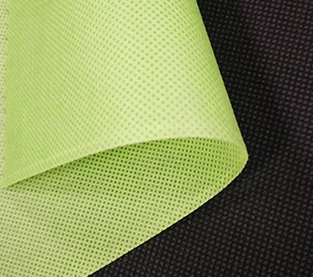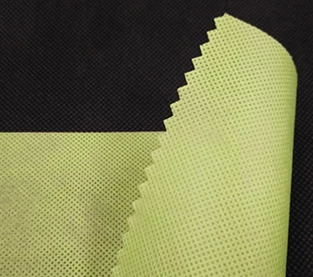Product: ES Material Fiber Nonwoven Fabric For Packaging
Raw Material: PP+PE
Nonwoven Technology: thermal bonded
Dotted Design: dot or plain
Gram: 25 gsm - 30 gsm
Color: White
Specification: custom
Sample: Can be provided without charge, freight to be collect
Applications:
Medical(20-60gsm): face masks,diapers,bed sheets,curtains,pillow covers,sanitary,etc
Packaging(25-30gsm): tea bag, coffee bag/filter paper, dust-proof covers.etc
Product: ES Thermal Bonded Non Woven Fabric For Tea Bag
Raw Material: PP+PE
Nonwoven Technology: thermal bonded
Dotted Design: dot or plain
Gram: 25 gsm - 30 gsm
Color: White
Specification: custom
Sample: Can be provided without charge, freight to be collect
Applications:
Medical(20-60gsm): face masks,diapers,bed sheets,curtains,pillow covers,sanitary,etc
Packaging(25-30gsm): tea bag, coffee bag/filter paper, dust-proof covers.etc
Product: Composite Non Woven Paper Desiccant Packaging Material
MOQ: 1000 kg
Material: Composite Non Woven Paper
Specification: Custom sizes.
Design: Welcome custom logo and design. Welcome OEM.
Color: Full Color of CMYK,Pantone Color as customer requirements
Weight: Based on size & material,thickness
Delivery Time: 10-15 days after confirmed the final artwork and order
Product: Desiccant Wrapping Paper
MOQ: 1000 kg
Material: DuPont Material
Specification: Custom sizes.
Design: Welcome custom logo and design. Welcome OEM.
Color: Full Color of CMYK,Pantone Color as customer requirements
Weight: Based on size & material,thickness
Delivery Time: 10-15 days after confirmed the final artwork and order
Product: Bi-component Non Woven Fabric Desiccant Packaging Material
MOQ: 1000 kg
Material: Bi-component Non Woven Fabric
Specification: Custom sizes.
Design: Welcome custom logo and design. Welcome OEM.
Color: Full Color of CMYK,Pantone Color as customer requirements
Weight: Based on size & material,thickness
Delivery Time: 10-15 days after confirmed the final artwork and order
Product: Spunbond Non Woven Fabric Custom Desiccant Packaging Material
MOQ: 1000 kg
Material: Spunbond Non Woven Fabric
Specification: Custom sizes.
Design: Welcome custom logo and design. Welcome OEM.
Color: Full Color of CMYK,Pantone Color as customer requirements
Weight: Based on size & material,thickness
Delivery Time: 10-15 days after confirmed the final artwork and order
And polylactic acid(PLA Non Woven Fabric Factory) does not produce morecarbon dioxide than chemical plastics. Because the raw material of polylacticacid, corn, grows through the photosynthesis of plants, it consumes carbondioxide. In addition, the industrialization of polylactic acid will greatlyincrease the added value of crops. Taking corn as an example, China has aninventory of more than 30 million tons per year, and most of it is used asfeed. If it is used to produce polylactic acid, it forms a “corn-lactic acid-polylactic acid-copolymer blend--applications”. The industrial chain can greatly increase the price of corn and increase the income of farmers.
Previously, polylactic acid(Degradable Nonwovens Wholesale) had been usedin packaging and tableware for agricultural films and convenience foods.However, compared with plastics made from oil and natural gas, the use of polylactic acid plastics made from plants is costly and deforms at around 60 °C. Due to these shortcomings,this material has so far been difficult to popularize.
Despite this, people are still very optimistic about polylactic acid(Environmentally Friendly Non-woven On Sales). An important reason is that it uses plants asraw materials. Polylactic acid has the potential to make a significant contribution to solving the two major problems of fossil fuel depletion and global warming facing the world.


In order to get rid of the dependence onthe depleted oil resources, the development of environmentally friendly biodegradable polymers to replace petroleum-based plastic products has become ahot spot of current research and development. After years of research, a numberof well-known scientific research institutions and enterprises have launched avariety of biodegradable polymers. Among the many biodegradable polymers,polylactic acid, which has just entered the industrialized production, has wonthe attention and favor of the global plastics industry with its excellent mechanical properties, wide application fields, remarkable environmental and social benefits. It is expected that during the period from 2005 to 2010, asthe production cost of polylactic acid approaches the cost of traditional plastics,the market application will be vigorously expanded, and the popularization will enter a peak period. The construction of polylactic acid will be launchedglobally.
It is predicted that global oil resources can only be consumed for more than 30 years, based on proven oil reserves andbased on current consumption. It is expected that before the depletion ofnon-renewable petroleum resources, the market price of petroleum and itsderivatives will skyrocket, and renewable products will become a tight consumergoods on a global scale. In this way, it brings a golden market opportunity andhuge consumption potential to polylactic acid. According to statistics, theworld's plastic consumption in 2000 was about 115 million tons. If the consumption of petroleum-based polymers after 10 to 20 years is 10% to 20%, the demand for polylactic acid in the world will reach 11.5 million to 23 milliontons per year. .
Reducing costs and increasing competitiveness with existing plastics are still issues that need to beaddressed in the future development of the polylactic acid industry. At thebeginning of 1998, the market price of polylactic acid dropped from US$5,000/ton to US$2,500/ton. The current price is 10%-15% cheaper than PET(polyethylene terephthalate). It is expected that the price of polylactic acidwill be 7 years later. It is expected to reach a level that can compete withall thermoplastic resins. Cargill Dow plans to invest $1 billion over the next10 years to build two more units in 2006 and 2009, with a total capacity of450,000 tons per year.
Japan is an important application development area and application market for polylactic acid in the world. It ismainly used in packaging containers, agriculture, construction, sportswear forsportswear and bedding. Japan says biodegradable plastics are green plastics.In order to increase market share, Cargill Dow Lacto Company announced that ithas cooperated with Mitsui Chemicals Co., Ltd. to develop application of polylactic acid. In the future, we will cooperate with Japan's Zhongfang Synthetic Fiber, Mitsubishi Resin, Eureka, and Kuraray to develop newapplication fields.
It is predicted that the demand for biodegradable polymers in North America will be strong in the next few years.In 2005, the average annual growth rate was 7%, reaching 1.6 million tons, ofwhich the demand for polylactic acid was nearly 1 million tons.
Not long ago, the US Department of Energyawarded $2 million to Cargill Dow for fermenting research using renewableresources. Another $2 million is spent on the research of polylactic acid andother products fermented from cereal fiber and plant stems.
According to China's sustainable development strategy, using renewable resources as raw materials, the market potential of bio-degradable polylactic acid using biotechnology is huge. Deep processing of food products and production of high value-added products aremajor initiatives to achieve leapfrog economic development. China is theworld's largest grain producer, and corn production ranks second in the worldafter the United States. With corn as raw material, the introduction of foreign advanced technology, the construction of large-scale polylactic acid deviceshas great room for development.